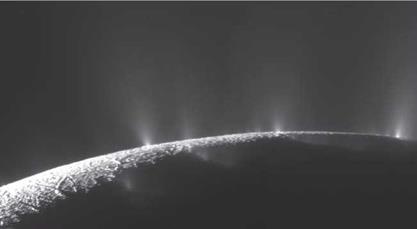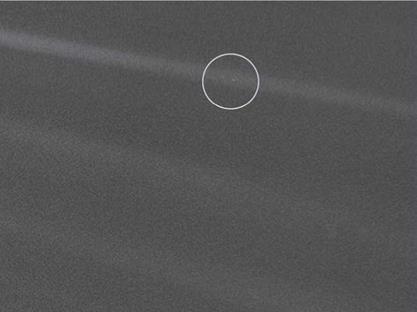The Weather Out There
On a typical summer’s day in 2011, the current conditions at Space- weather. com read: “Solar Wind speed 515.9 kilometers per second, 0.3 protons per cubic centimeter.” That’s a speed of 1,125,000 mph and just one atom in the volume of a sugar cube, or a vacuum a billion billion times thinner than the air we breathe. The website also predicts “X-Ray Solar Flare: 24-hr max: B4.” That’s a puny flare, thousands of times weaker than the 1859 event.9 In space weather rankings, B-class solar flares are completely “below the radar” and negligible, C-class X-ray solar flares are small and have very little impact on Earth, M-class flares cause momentary radio blackouts and can affect Earth’s Arctic and Antarctic regions, and X-class flares are major events causing planet-wide blackouts and week – long radiation storms. NOAA, the National Oceanic and Atmospheric Administration (more commonly known as the National Weather Service), provides detailed space weather reports updated every ten minutes. But what, one might ask, is the relevance of solar flares for our protected oasis of life on Earth, 93 million miles from the Sun?
Like a lonely sentinel stationed roughly a million miles from Earth at the Lagrangian point L1, NASA’s Solar and Heliospheric Observatory (SOHO) keeps a steady finger on the Sun’s pulse. Its game is called helioseismology, or the study of the “hum” of the sound waves reverberating throughout the Sun. Scientists use these acoustic probes to better understand its interior structure and energy production as well as possibly predict disturbances at the surface, like sunspots. SOHO has demonstrated with great clarity that solar flares—the sudden explosions of matter, electromagnetic radiation, and high-energy particles from the Sun—can be unimaginably energetic cataclysms (plate 11). As University of Michigan Space Physics professor Mark Moldwin notes, “Flares release tremendous amounts of energy in a few minutes and can reach temperatures of 100 million K (much hotter than even the core of the Sun).”10 Space telescopes like SOHO and the new Solar Dynamics Observatory (SDO) are giving scientists a front row seat in observing the powerful dynamo of our star.
The Sun has magnetic poles. Approximately every eleven years, the direction of the poles reverses—imagine an object trillions of times bigger than a bar magnet completely reorienting its magnetic field. Such large-scale restructuring unleashes incredible magnetic forces, which lead over a few years to an exponentially greater degree of solar activity and solar storms. The tremendous energetic output at the most volatile stage of the process is known as the solar maximum. John Weiley’s IMAX film Solarmax (2000) has captivated audiences at planetaria and science museums with SOHO footage of the Sun’s violent storms leading up to the solar maximum of 2000 and 2001. The film’s amazing time-lapse footage demonstrates our Sun’s variability and the explosive energy of coronal mass ejections, plasma and magnetic fields blown off from the Sun’s corona that can cause severe magnetic storms on Earth.
The Earth’s magnetosphere largely protects us from the solar wind,11 the Sun’s outpouring of highly charged particles. More than that, this protection has been essential for the survival of life as we know it. Mars has a much weaker magnetic field and long ago lost most of its atmosphere and all of its oceans in large part due to the solar wind. However, when they reach dangerous levels, storms in space can cause power grid blackouts leaving millions without electricity, and may produce a rapid buildup of powerful electrical charges on satellites that can fry their delicate instruments. It has only been in the last few decades that we’ve realized the impact of space weather.
Space weather researchers highlight “evidence of the influence of solar activity on the terrestrial climate.”12 Mark Moldwin points out that in the 350-year span between AD 900 and 1250, during an extended warming period produced by increased solar activity, the North Atlantic experienced much milder temperatures. This prompted Nordic people to establish communities in Greenland and assign the region a “name that seems peculiar now since it is covered by one of the world’s largest ice sheets year round.”13 When solar activity subsequently decreased, Greenland froze over and settlers there either migrated or died. Later, during what is often called the Little Ice Age, lasting roughly between 1550 and 1750, historians report “winters were so cold. . . the principal rivers in mid-latitude Europe froze over.”14 This has been attributed to a solar minimum and apparently an extended period in which there were few sunspots.
The Earth naturally has gone through cycles of ice ages, but as Moldwin explains, the most recent, the Quaternary, extended from 2.5 million years ago to about 10,000 years ago, when large reaches of ice receded. The problem we’re currently facing is global warming, where temperatures consistent for the last 10,000 years are now on the rise. Moldwin writes, “Model predictions indicate that Earth’s climate will be drastically different than it is today in less than 100 years because of the burning of hydrocarbon fuel for transportation and energy. That is very quick compared to the normal timescale of climate change.”15 Added to this is the fact that solar storms can seriously damage the Earth’s ozone layer, which protects all life on Earth from damaging ultraviolet rays and could, in turn, further contribute to warming Earth’s atmosphere.
NASA created its “Living with a Star” program in 2001 to gather better data for understanding the effects of the Sun on the Earth.16 If we ever move beyond our planet and engage in routine space exploration, we must leave the protective “bubble” provided by the Earth’s magnetic field and atmosphere. Our spaceships and astronauts will have to deal with the Sun and its stormy weather directly. A small armada of spacecraft has been involved in this effort, but the most notable is a very sturdy device that’s still going strong seventeen years after its launch.













